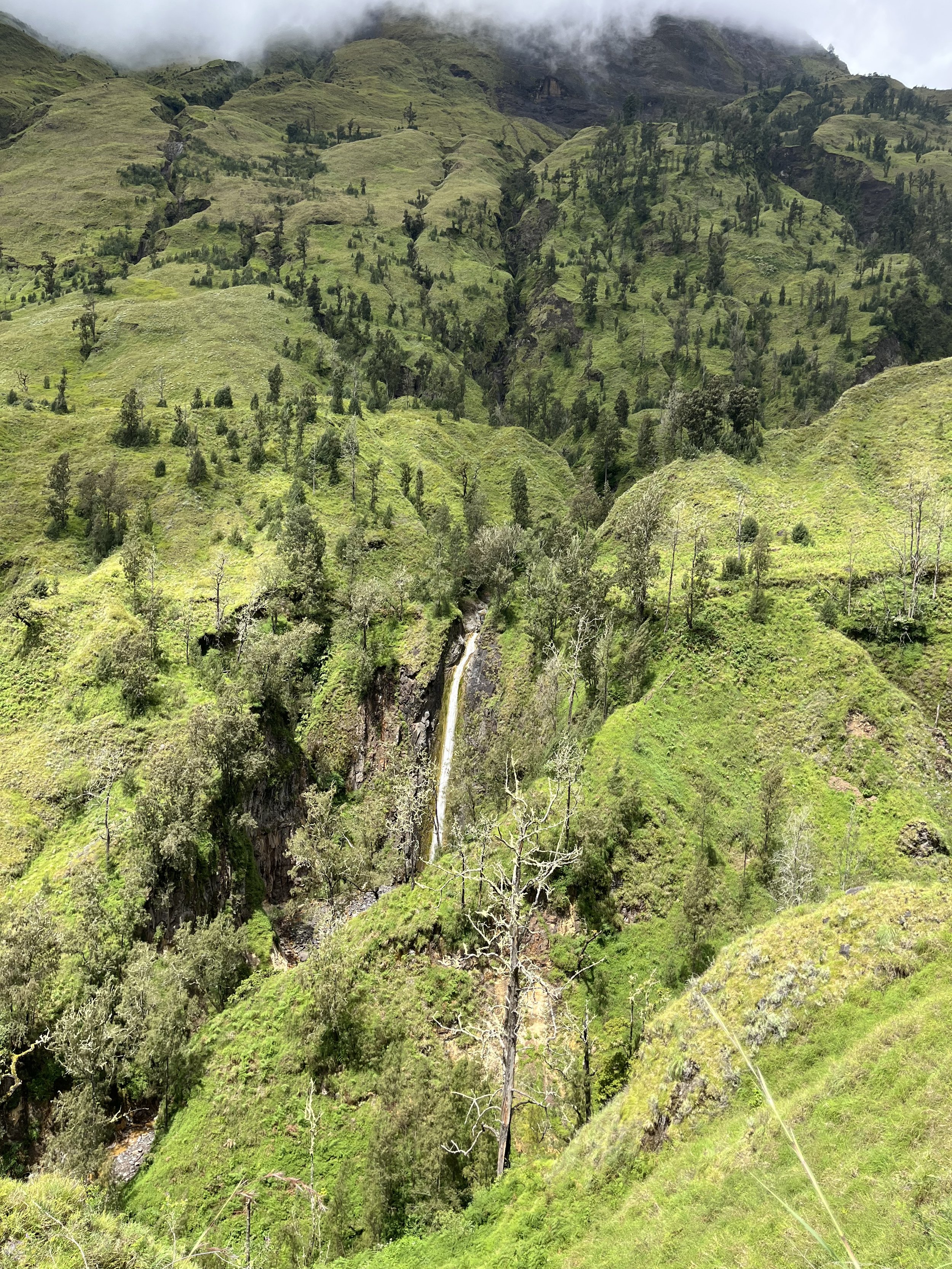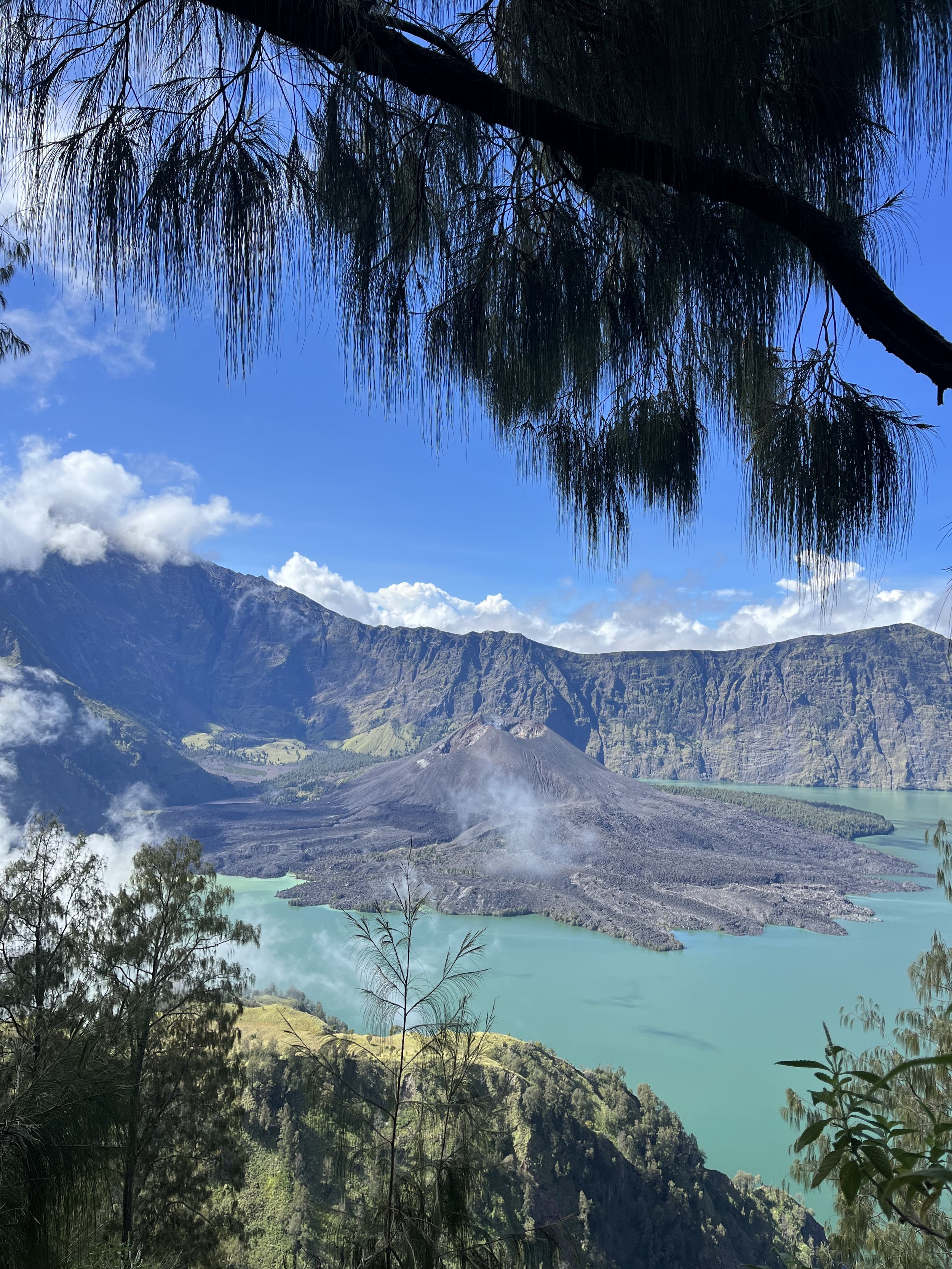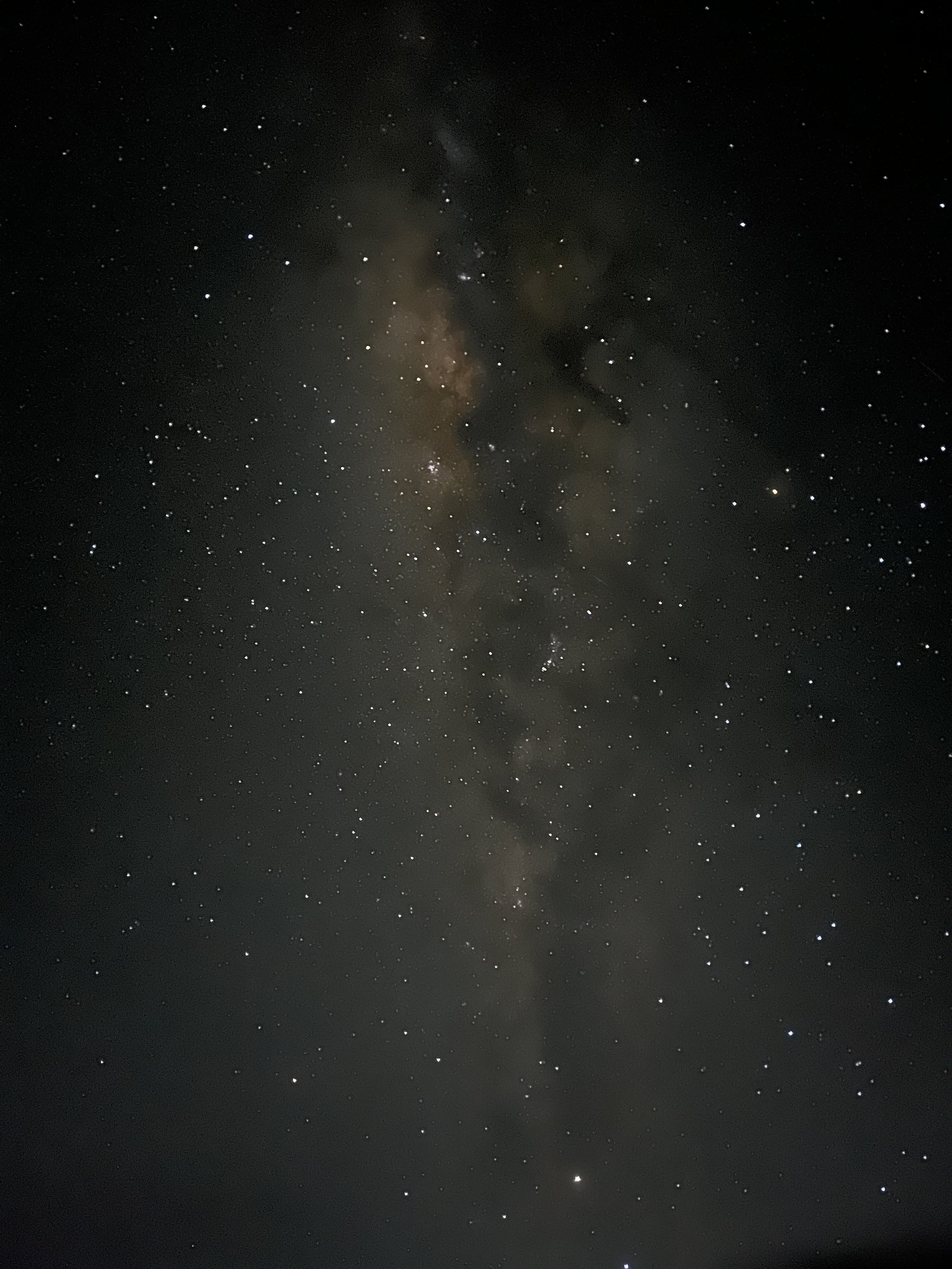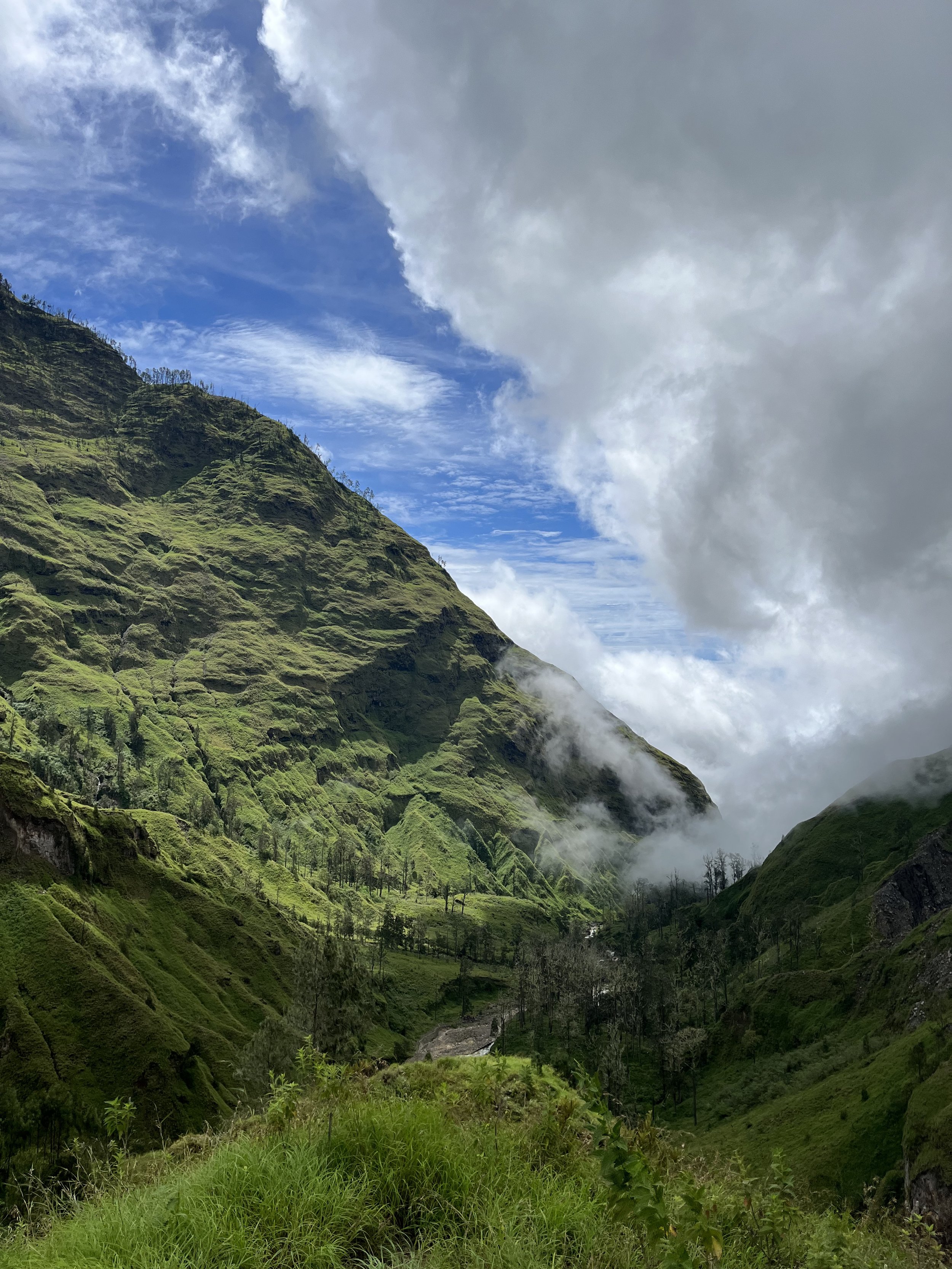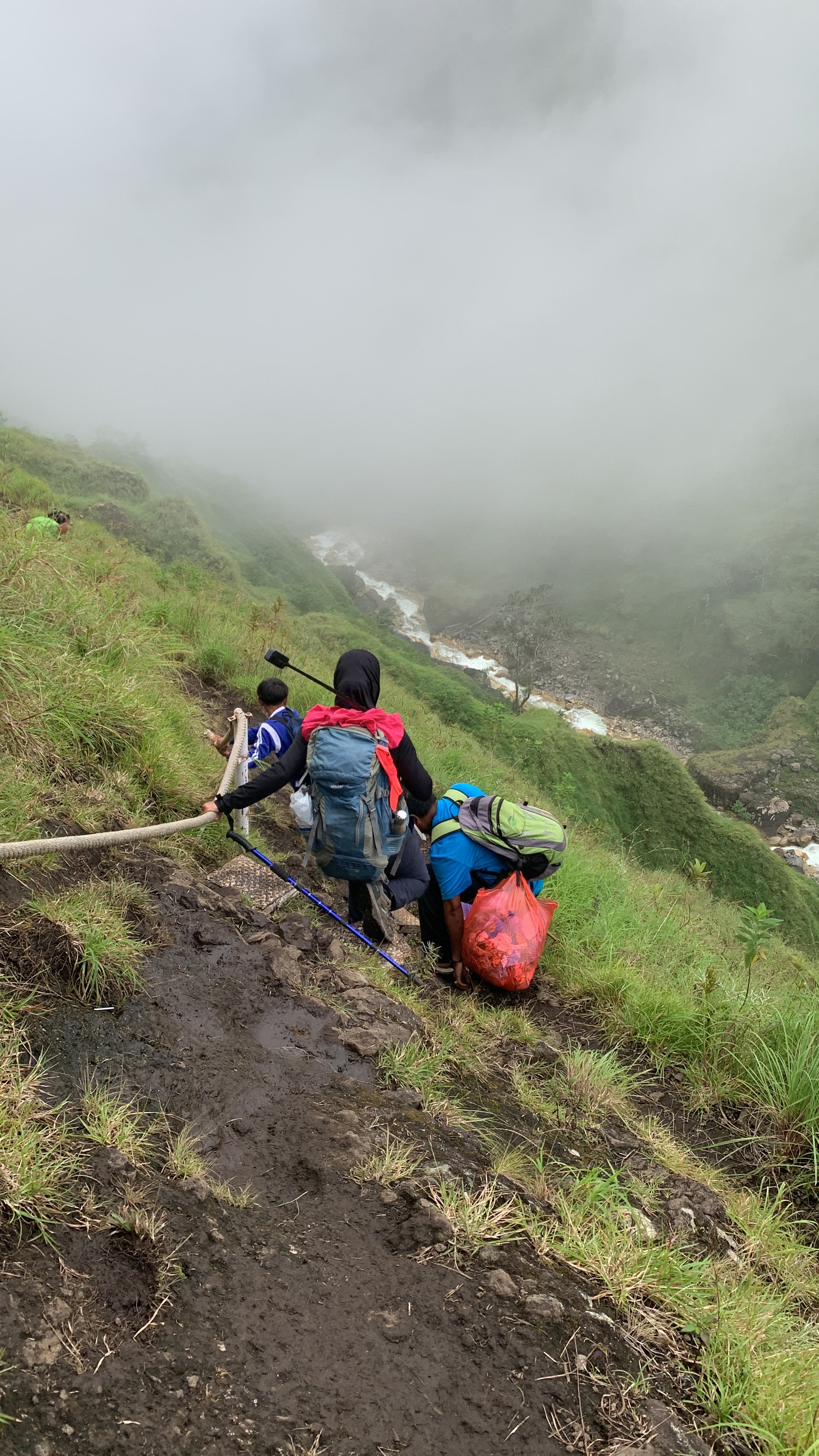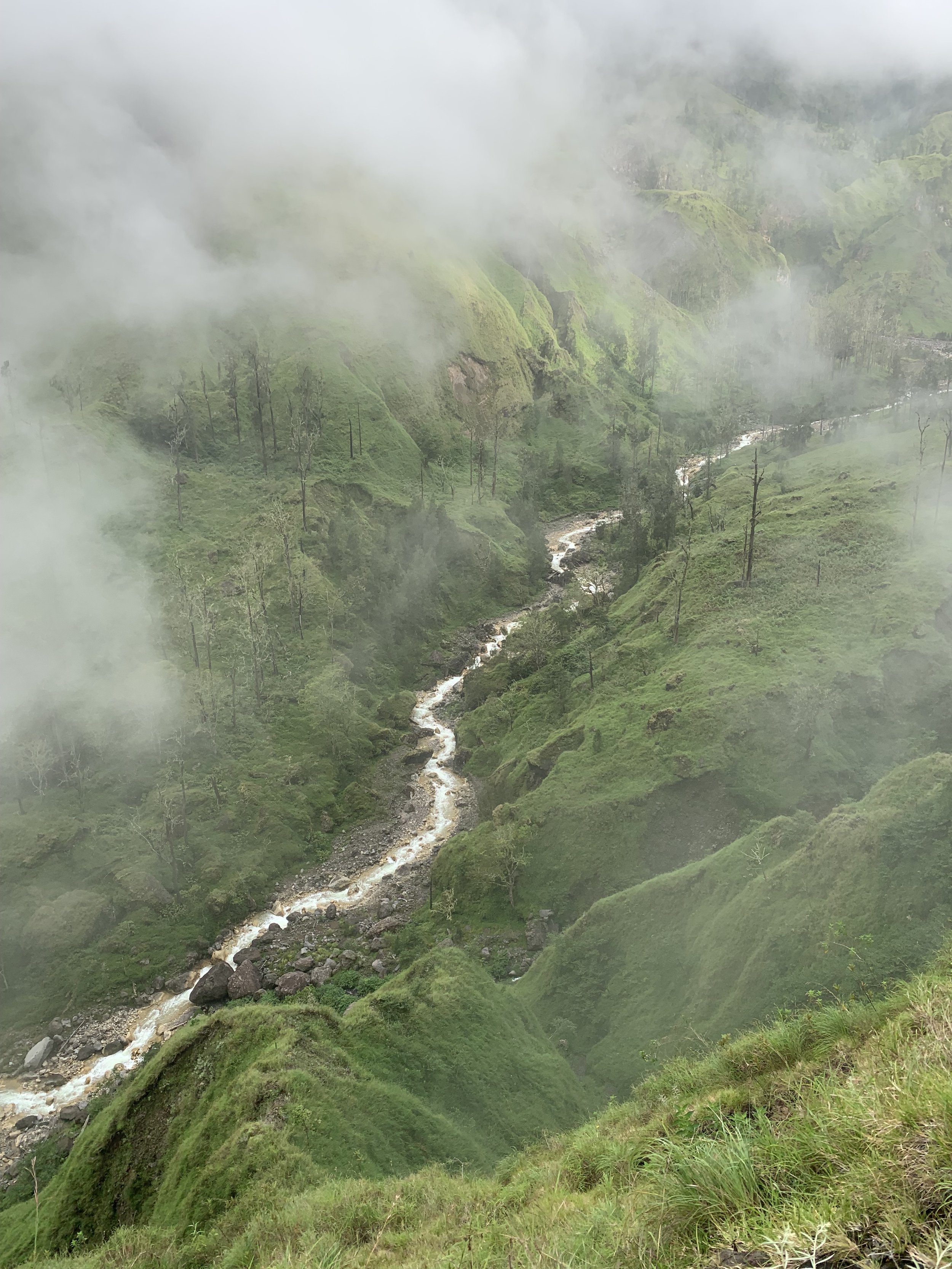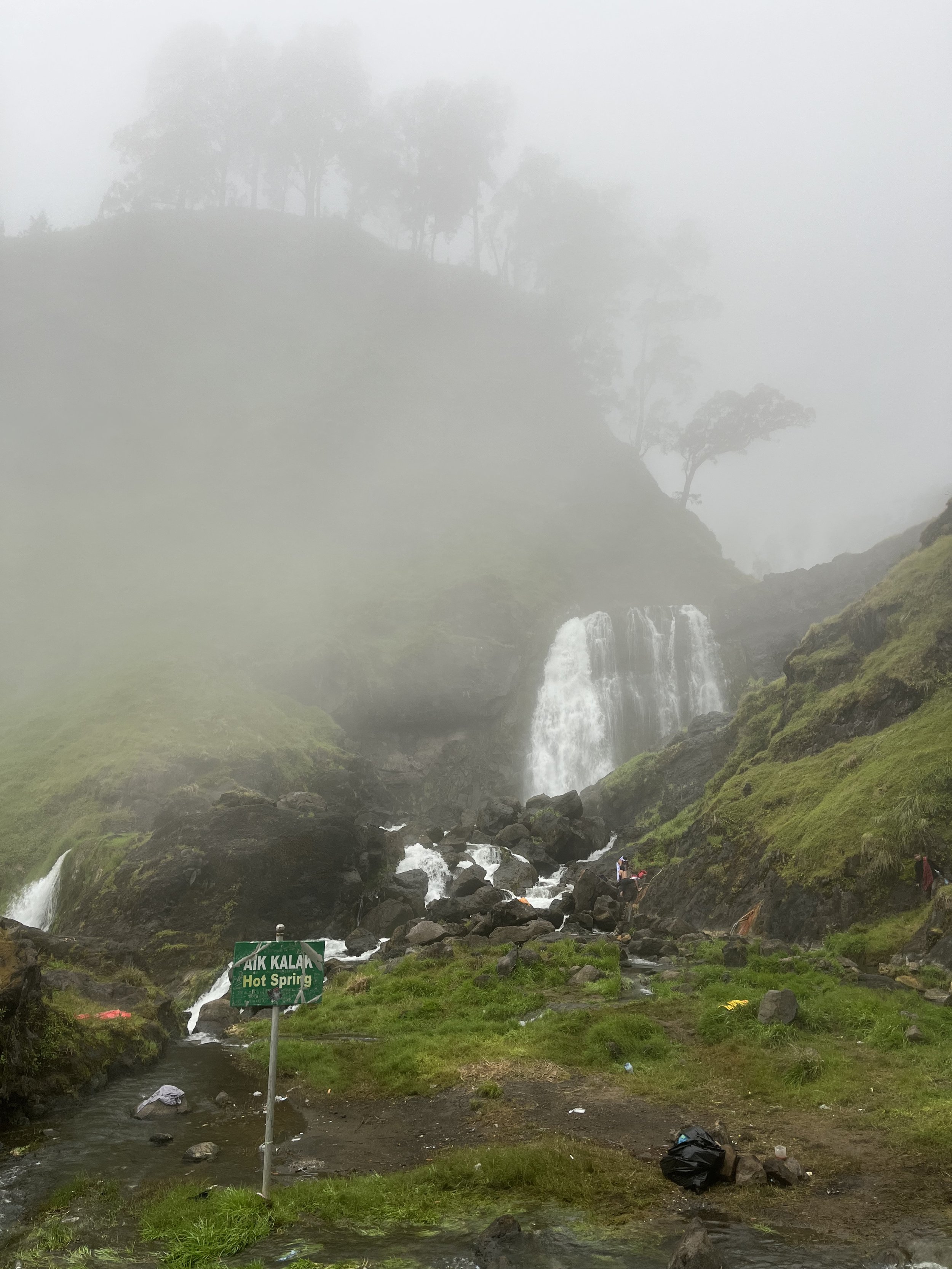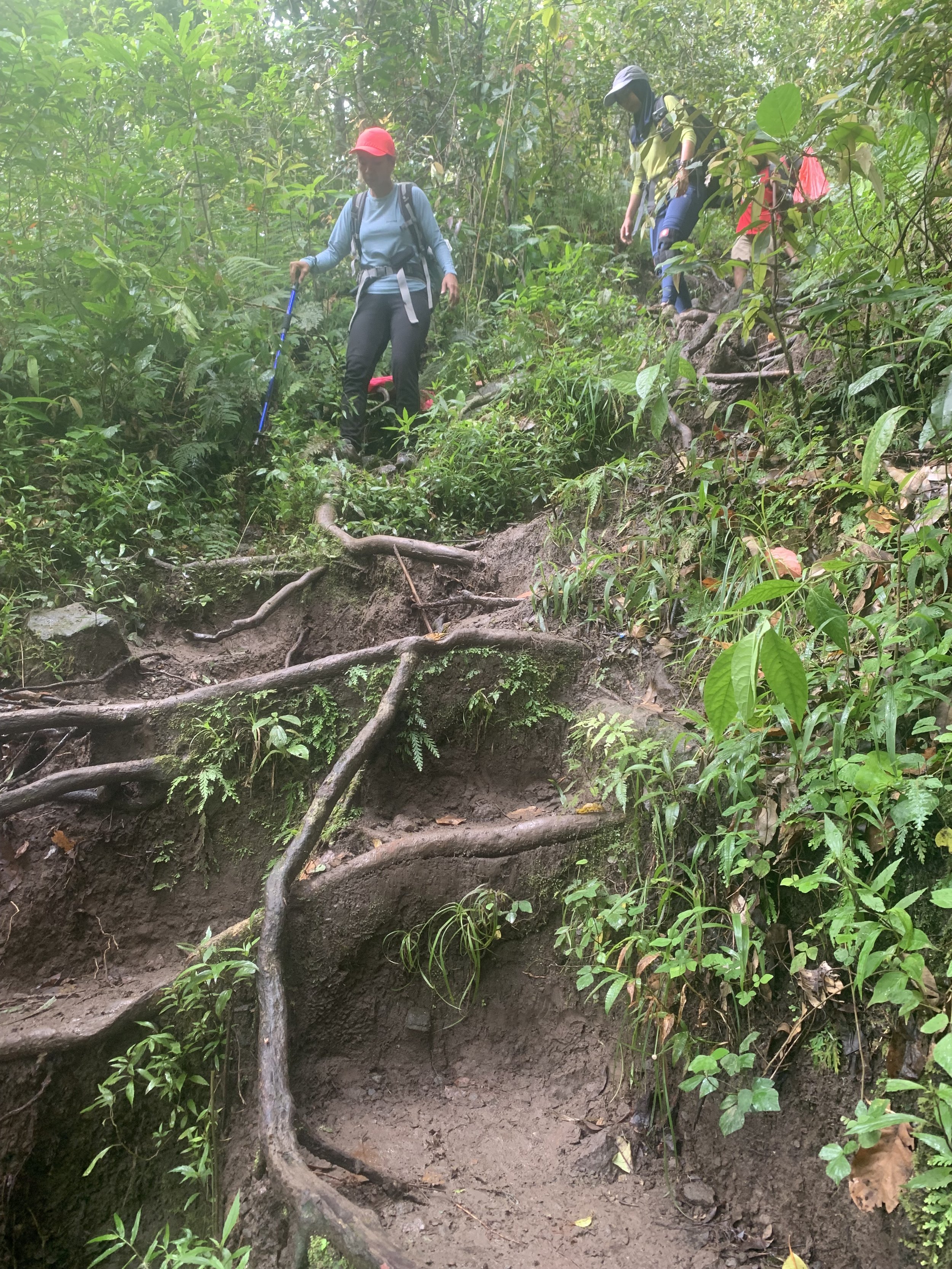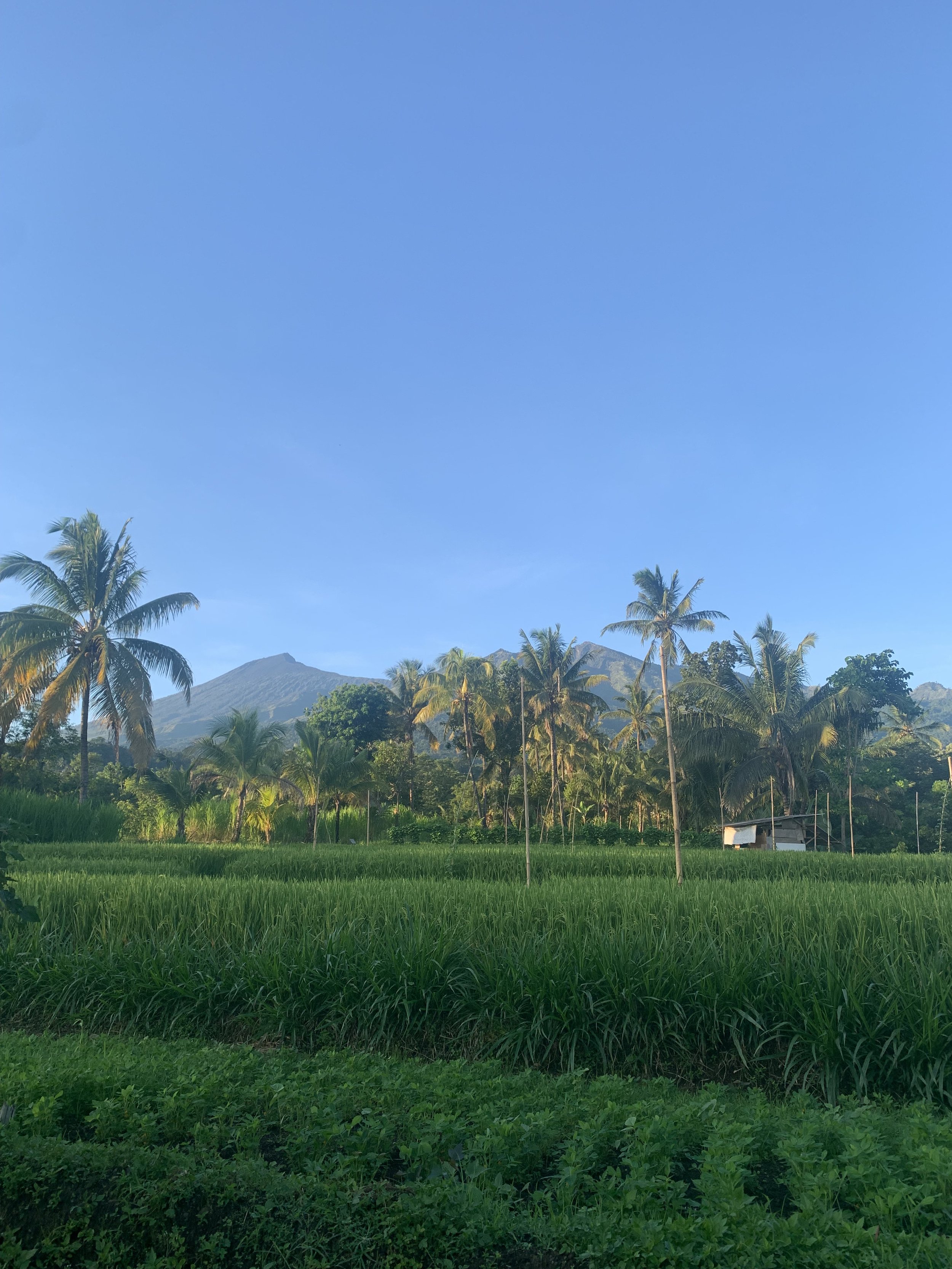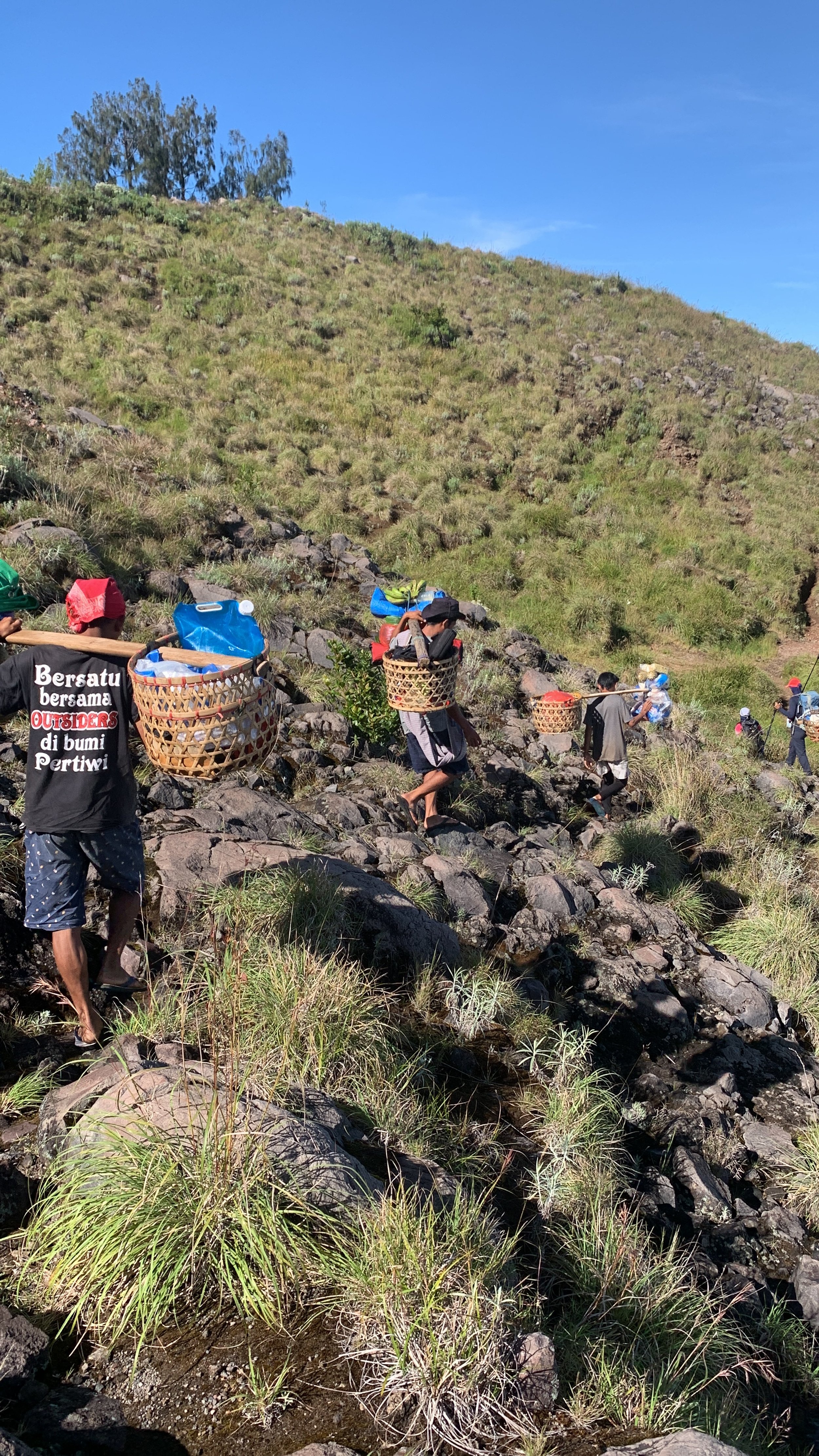Trekking | Mt. Rinjani, Indonesia
If you ask any Indonesian, who are quite an adventurous group of people, Rinjani will always be the top of their list for the most beautiful trek in Indonesia. And that says a lot because the country is home to 43 mountains and thousands of hilly viewpoints. The summit of Mt. Rinjani is 3,726 meters above sea level, the second highest in Indonesia, which is a major drawing point for those who thrive on challenges. For us, we love the lakeside. As you come over the crater rim and catch your first glimpse of Segara Anak and all of her hues of blues, all the work it took to get there comes into perspective. It is worth the 6+ hours of ascent.
Mt. Rinjani is also unique because it has an active volcano inside of the crater lake, named Gunung Barujari and can be seen puffing away on most days. Because this mountain is also an active volcano, there are a few hot springs to soak in to heal those sore muscles. There are not many trips that Jin and Simon go on together but when they went up in 2017, they were pleasantly surprised when their guides brought them to a hot water waterfall. How many of you can say that you have swam in a hot water waterfall?
The one downside of Mt. Rinjani is the mismanagement of the number of daily visitors and the rubbish that is left. Mt. Rinjani is unofficially known as the Rubbish Walk. We work with local guides and porters who do their part and more by removing rubbish from the mountain with every group that is sent up. We have high hopes to work with local and the national park to make Rinjani Rubbish Free by next season.
There are officially six different routes up the mountain. Senaru Trail and Sembalun Trail are the most popular. Sembalun is the access point to the summit, while Senaru is where you get the best views of both Segara Anak, Gunung Barujari, and the Gili Islands. Before Covid, the most popular route to take was up Sembalun and down Senaru. These days, the preference is to descend down Torean Trail.
When Simon and Jin went in 2017, we were the only ones going down this route. We were immediately transported to the scenery that could easily be mistaken for New Zealand. We were shocked that no one else was taking this route.
If you are trekking for a good time, we will always recommend the Senaru-Torean route; however for those who want to summit, you will miss out on the iconic Segara Anak views and take the Sembalun-Torean route.
Where is South Lombok:
South Lombok (Indonesia) is accessible by direct flight with Scoot, flying once a day, four days out of the week. SSR is around 40mins drive from the airport and once you are there, you are less than 15 minutes drive away from three white sand beaches.
TIP: It is ideal to end your trip to Lombok on a Monday because it is the only day that Scoot offers an evening flight from Lombok to Singapore.
When Is the best time:
Mt. Rinjani is open March to November, and the season might be a little different every year depending on the rain. The best months to climb Rinjani are the shoulder seasons, May to early June and October to early November. July and August are also the coolest months in Lombok, due to the southern hemisphere winter, so it gets a little bit colder. The only times that to avoid trekking is during Lebaran (Hari Raya Puasa week) because this is a popular place for Indonesians to enjoy their week off; and that is the same is Hari Raja Haji. These dates change every year as it is based on the lunar calendar. Indonesian National Day (17 August) is also a date to avoid due to local public holidays.
TIP: Gather your friends and trek together. Logistically and fiscally speaking, the best group size is 4 or 6-8 people, sharing the cost of transport to and from the airport.
Pre-reqs:
If you plan to summit to the peak, you must be fit; after Sembalun Crater Rim, the path up is rubble which often means 2 steps up and 1 step down. There is a also small chance that you are affected by the altitude, so be aware of your headaches. If you plan on the scenic route Senaru-Torean, we believe it is manageable for anyone who can power through, but it is advised to do some leg days in advance.
Please be wary of any fear of heights and vertigo. There are parts of the trail down to the lake and down Torean where you are on very steep stairs or on a path on the side of the cliff.
Indicative prices and Itinerary:
4 days 3 nights, Senaru-Torean Trail. Please note that most other organisers do not include transport and accommodation in Senaru.
Price per person:
SG$960 per person (group of 3)
SG$820 per person (group of 4)
SG$900 per person (group of 5)
SG$800 per person (group of 6)
Includes: Transfer to/from airport to Senaru; 2 nights accommodation in Senaru the day before/after; 4 days 3 nights trekking full support (guide, porters, all meals on the mountain, national park fees, water)
Excludes: All flights (SG$200-450 return); Travel Insurance.
3D2N starts at SG$740 per person based on a group of 4
Sample Itinerary:
Wednesday
Fly Scoot Singapore 07:30 to Lombok 10:20
Transfer from the airport to Senaru (±3hrs)
Explore Tiu Kelep and Sendang Gile waterfall in the afternoon
Thursday
07:00 Start trekking; about 6 hours to Senaru Crater Rim with rest stops
Camp at Senaru Crater Rim
Friday
Sunrise at Senaru Crater Rim
Descend to Segara Anak (±3hrs)
Camp near the lakeside or hot springs, depending on availability
Enjoy the hotsprings
Saturday
Enjoy the hotpsrings
Descend via Torean Trail (±6hrs)
Camping near the river or in the jungle
Sunday
Descend to Torean Village (±3hrs)
Pick up and transfer back to Senaru; relax 1 night in Senaru
Monday
Transfer to Kuta Lombok
Explore Kuta on (cafes, surf shops, Recovery Centre with ice bath, massage)
16:30 Depart Kuta for the airport
Fly Scoot Lombok 19:10 to Singapore 22:55

